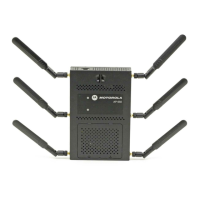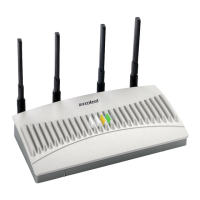Motorola Solutions AP-6511 Access Point System Reference Guide
5-68
5.4.3.3 Overriding a Profile’s NAT Configuration
Overriding a Profile’s Security Configuration
Network Address Translation (NAT) is a technique to modify network address information within IP packet
headers in transit across a traffic routing device. This enables mapping one IP address to another to protect
wireless controller managed network address credentials. With typical deployments, NAT is used as an IP
masquerading technique to hide private IP addresses behind a single, public facing, IP address.
NAT is a process of modifying network address information in IP packet headers while in transit across a
traffic routing device for the purpose of remapping one IP address to another. In most deployments NAT is
used in conjunction with IP masquerading which hides RFC1918 private IP addresses behind a single public
IP address.
NAT provides outbound Internet access to wired and wireless hosts. Many-to-one NAT is the most common
NAT technique for outbound Internet access. Many-to-one NAT allows the Access Point to translate one or
more private IP addresses to a single, public facing, IP address assigned to a 10/100/1000 Ethernet port or
3G card.
To define a NAT configuration or override that can be applied to a profile:
1. Select Devices from the Configuration tab.
2. Select a target device (by double-clicking it) from amongst those displayed within the Device
Configuration screen.
Devices can also be selected directly from the Device Browser in the lower, left-hand, side of the UI.
3. Select Profile Overrides from the Device menu to expand it into sub menu options.
4. Select Security to expand its sub menu options.
5. Select NAT.
NOTE: A blue override icon (to the left of a parameter) defines the parameter as having
an override applied. To revert the override back to its original profile setting, select the
override icon to display an Action pop-up. Select the Remove Override checkbox to
revert the override to its original setting for this profile.

